Ozito PXBDS-220U Handleiding
Ozito
Boormachine
PXBDS-220U
Bekijk gratis de handleiding van Ozito PXBDS-220U (4 pagina’s), behorend tot de categorie Boormachine. Deze gids werd als nuttig beoordeeld door 59 mensen en kreeg gemiddeld 4.1 sterren uit 30 reviews. Heb je een vraag over Ozito PXBDS-220U of wil je andere gebruikers van dit product iets vragen? Stel een vraag
Pagina 1/4

Battery & Charger
sold separately
WHAT’S IN THE BOX
Brushless Drill Driver
B
R
U
S
H
L
E
S
S
B
R
U
S
H
L
E
S
S
SPECIFICATIONS
Input: 18V
Chuck Size: 13mm Keyless
No Load Speed: 0-400 / 0-1,500/min
Torque Setting: 21
Max. Torque: 40Nm
Max. Drilling Ø: 32mm Wood
10mm Metal
Weight: 1.1kg
BRUSHLESS
DRILL DRIVER
ORIGINAL INSTRUCTIONS
ozito-diy.co.uk
PXBDS-220U
WARRANTY
iSC GmbH · Eschenstraße 6 · 94405 Landau /Isar · Germany 1119
All of our products undergo strict quality checks to ensure that they reach you in perfect condition. In the unlikely event that your device develops a fault,
please contact our service department at the address shown on this guarantee card. You can also contact us by telephone using the customer service
number shown. Please note the following terms under which guarantee claims can be made:
1. These warranty terms regulate additional warranty services, which the manufacturer mentioned below promises to buyers of its new products in addition
to their statutory guarantee claims are not affected by this guarantee. Our guarantee is free of charge to you.
2. The warranty services only covers defects due to material or manufacturing faults on
a product which you have bought from the manufacturer mentioned below are limited to either the rectifi cation of said defects on the product or the
replacement of the product, whichever we prefer.
Please note that our devices are not designed for use in commercial, trade or professional applications. A guarantee contract will not be created if the
device has been used by commercial, trade or industrial business or has been exposed to similar stresses during the guarantee period.
3. The following are not covered by our guarantee:
- Damage to the device caused by a failure to follow the assembly instructions or due to incorrect installation, a failure to follow the operating instructions
(for example connecting it to an incorrect mains voltage or current type) or a failure to follow the maintenance and safety instructions or by exposing the
device to abnormal environmental conditions or by lack of care and maintenance.
- Damage to the device caused by abuse or incorrect use (for example overloading the device or the use or unapproved tools or accessories), ingress of
foreign bodies into the device (such as sand, stones or dust, transport damage), the use of force or damage caused by external forces (for example by
dropping it).
- Damage to the device or parts of the device caused by normal or natural wear or tear or by normal use of the device.
4. Your Product is guaranteed for a period of 60 months from the original date of purchase and is intended for DIY (Do It Yourself) use only. Lithium Ion
batteries and chargers are covered by a 12 month warranty. Warranty excludes consumable parts, for example: grinding discs. Guarantee claims should
be submitted before the end of the guarantee period within two weeks of the defect being noticed. No guarantee claims will be accepted after the end
of the guarantee period. The original guarantee period remains applicable to the device even if repairs are carried out or parts are replaced. In such
cases, the work performed or parts fi tted will not result in an extension of the guarantee period, and no new guarantee will become active for the work
performed or parts fi tted. This also applies if an on-site service is used.
IN ORDER TO MAKE A CLAIM UNDER THIS WARRANTY YOU MUST RETURN THE PRODUCT TO THE PLACE OF PURCHASE WITH YOUR REGISTER
RECEIPT.
Please refer to the restrictions of this warranty concerning wearing parts, consumables and missing parts as set out in the service information in these
operating instructions.
CUSTOMER SERVICE HELPLINE
GB: 0151 294 4488
IRL: 1850 882711
Ozito-diy.co.uk
MAINTENANCE TROUBLESHOOTING BATTERY AND CHARGER SAFETY WARNINGS
THIS MANUAL CONTAINS IMPORTANT SAFETY AND OPERATING INSTRUCTIONS FOR YOUR BATTERY CHARGER.
1. Before using the charger read all instructions and cautionary markings on the charger, battery pack and the product
using the battery pack.
2. This charger is not intended for any uses other than charging rechargeable batteries. Any other use may result in risk of
fi re, electric shock or electrocution.
3. Do not place any object on top of the charger or place the charger on a soft surface that may result in excessive internal
heat. Place the charger in a position away from any heat source.
4. To reduce risk of damage to the electric plug and cord, pull by the plug rather than the cord when disconnecting the
charger.
5. Make sure the cord is located so that it will not be stepped on, tripped over, or otherwise subjected to damage or stress.
6. An extension cord should not be used unless absolutely necessary. Use of an improper extension cord could result in the risk
of fi re, electric shock or electrocution.
7. Do not operate the charger if it has received a sharp blow, been dropped or otherwise damaged in any way. Have it
checked by an electrician or power tool repairer.
8. Do not disassemble charger. Take it to an electrician or power tool repairer when service or repair is required. Incorrect
reassembly may result in a risk of electric shock, electrocution or fi re.
9. To reduce risk of electric shock, unplug the charger from the outlet before attempting any cleaning. Removing the
battery pack will not reduce this risk.
10. Never attempt to connect 2 chargers together.
11. DO NOT store or use the tool and battery pack in locations where the temperature may reach or exceed 40ºC (such as inside
sheds or metal buildings in summer).
12. The charger is designed to operate on standard household electrical power (240 volts). Do not attempt to use it on any
other voltage!
13. The battery pack is not fully charged out of the carton. First read the safety instructions and then follow the charging
notes and procedures.
14. The longest life and best performance can be obtained if the battery pack is charged when the air temperature is
between 18 - 24ºC. Do not charge the battery pack in an air temperature below 10ºC or above 40ºC. This is important
and will prevent damage to the battery pack.
15. Do not incinerate the battery pack even if it is seriously damaged or is completely worn out. The battery can explode in a
fi re.
16. Never attempt to open the battery pack for any reason. If the plastic housing of the battery pack breaks or cracks, immediately
discontinue use and do not recharge.
17. During charging, the battery must be placed in a well ventilated area.
DESCRIPTION OF SYMBOLS
SPARE PARTS
Battery protection system
The tool is equipped with the battery protection system, which helps to ensure a long service
life.
The output power automatically cuts off during operation when the tool and/or battery are
placed under the following situations:
• When the tool is overloaded:
If this occurs, release the trigger switch and remove causes of overload, then pull the
switch trigger again to restart.
• When the remaining battery capacity becomes low:
Recharge the battery pack.
Note: The battery protection system does not in any way damage the tool.
Note: The indicated capacity may be lower than the actual level during use or immediately
after using the tool.
Warning Read instruction manual
ø Diameter
mA Milliamperes
Recycle battery Do not put in the rubbish
Polarity
Do not incinerate Do not get battery wet
Thermal cut-out protection
Double insulated
/min Revolutions or reciprocation per minute
Ah Amp hour
Indoor use only
Lithium Ion battery Do not use or store battery in
temperatures exceeding 50ºC
Nm o Newton Meters nNo load speed
VVolts Hz Hertz
ac/~ W Alternating current Watts
Direct current
dc/
LED lights do not illuminate on charger
Check the charging adaptor is securely plugged into the wall outlet.
Check the battery is fi rmly connected to the charging cradle.
Check that the charging jack is securely connected to the charging cradle.
Variable speed trigger is locked
Ensure that the forward / reverse lever is in the correct position; pressed left for forwards
direction, pressed right for backwards direction. If it is in between the two settings the
variable speed trigger will be locked.
The drill is stripping the screw head
Ensure you are starting with a low torque setting and holding the drill securely onto the
screw head. Increase the torque setting as required.
Drill has cut out during use
The battery charge could be completely depleted. Place the battery on the charging cradle
for 3-5 hours.
1. When not in use, the drill should be stored in a dry, frost free location, keep
out of children’s reach.
2. Keep ventilation slots of the drill clean at all times and prevent anything from
entering.
3. If the housing of the drill requires cleaning, do not use solvents. Use of a cloth
only is recommended.
4. Blow out the ventilation slots with compressed air periodically .
Note: Ozito Industries will not be responsible for any damage or injuries caused by
repair of the drill by an unauthorised person or by mishandling.
Spare parts can be ordered from the Special Orders Desk
at your local Bunnings Warehouse.
For further information, or any parts not listed here, visit
www.ozito-diy.co.uk or contact Ozito Customer Service:
GB: 0151 294 4488
IRL: 1850 882711
E-mail: info@ozito-diy.co.uk
WARNING! When using mains-powered tools, basic safety precautions, including the
following, should always be followed to reduce risk of fi re, electric shock, personal injury
and material damage.
Read the whole manual carefully and make sure you know how to switch the tool off in an emergency, before operating the tool.
Save these instructions and other documents supplied with this tool for future reference.
Before you connect the charger to the mains supply make sure that the data on the rating plate are identical to the mains data.
This tools charger is double insulated; therefore no earth wire is required.
If the supply cord is damaged, it must be replaced by an electrician or a power tool repairer in order to avoid a hazard.
Note: Double insulation does not take the place of normal safety precautions when operating this tool. The insulation system is for
added protection against injury resulting from a possible electrical insulation failure within the tool.
The power supply for this products charger should be protected by a residual current device (rated at 30mA
or less). A residual current device reduces the risk of electric shock.
ELECTRICAL SAFETY
WARNING! Wear ear protectors when impact drilling. Exposure to noise can
cause hearing loss.
Use auxiliary handle(s), if supplied with the tool. Loss of control can cause
personal injury.
Hold power tool by insulated gripping surfaces, when performing an operation
where the cutting accessory may contact hidden wiring or its own cord. Cutting
accessory contacting a “live” wire may make exposed metal parts of the power tool
“live” and could give the operator an electric shock.
Before drilling into walls, ceilings etc, ensure that there are no concealed power cables
or pipes in the cavity.
WARNING! Some dust created by power sanding, sawing, grinding, drilling and
other construction activities contain chemicals known to cause cancer, birth
defects or other reproductive harm. Some examples of these chemicals are:
• Lead from lead-based paints
• Crystalline silica from bricks and cement and other masonry products
• Arsenic and chromium from chemically treated timber
Your risk from exposure to these chemicals varies, depending on how often you do this
type of work. To reduce your exposure to these chemicals: work in a well ventilated
area and work with approved safety equipment, such as dust masks that are specially
designed to fi lter out microscopic particles.
This appliance is not intended for use by young or infi rm persons unless
supervised by a responsible person to ensure that they can use the appliance
safely. Young children should be supervised to ensure that they do not play with the
appliance.
DRILL DRIVER SAFETY WARNINGS
GENERAL POWER TOOL SAFETY WARNINGS
WARNING! Read all the safety information, instructions, illustrations and
technical data provided on or with this power tool. Failure to adhere to the
following instructions may result in electric shock, fi re and/or serious injury.
Keep all the safety information and instructions in a safe place for future use.
The term „power tool“ used in the safety information and instructions refers to power
tools operated from the mains power supply (with a power cable) and to battery ope-
rated power tools (without a power cable).
1. Workplace safety
a) Untidy or unlit work areas Keep your work area clean and well illuminated.
can result in accidents.
b) Do not operate the electric tool in an environment where there is a risk of
explosions and where there are infl ammable liquids, gases or dust. Electric
tools produce sparks which could set the dust or vapours alight.
c) Keep children and other people away from the power tool while you are
using it. If you are distracted you may lose control of the power tool.
2. Electrical safety
a) The connector plug from this electric tool must fi t into the socket. The plug
should never be altered in any way. Never use adapter plugs together with
earthed electric tools. Unaltered plugs and correct sockets reduce the risk of an
electric shock.
b) Avoid bodily contact with earthed surfaces such as pipes, heating, ovens
and fridges. The risk of electric shock is increased if your body is earthed.
c) The ingress of water Keep the tool out of the rain and away from moisture.
into an electric tool increases the risk of an electric shock.
d) Do not use the power cable for a purpose for which it is not designed, for
example to carry the power tool, hang it up or to pull the plug out of the
socket. Keep the power cable away from heat, oil, sharp edges and moving
parts. Power cables that are damaged or tangled increase the risk of an electric
shock.
e) If you use an electric power tool outdoors, use only extension cables that
are suitable for outdoor use. The use of an extension cable which is suitable
for outdoor use reduces the risk of an electric shock.
f) If operation of the electric tool in a damp environment can not be avoided,
use a earth-leakage circuit-breaker. The earth-leakage circuit-breaker reduces
the risk of an electric shock.
3. Safety of persons
a) Be careful, watch what you are doing and use an electric tool sensibly. Do
not use the tool if you are tired or under the infl uence of drugs, alcohol or
medication. A moment of inattention when using the electric tool can result in
serious injuries.
b) Wear personal protection equipment and always wear safety goggles.
Wearing personal protection (such as dust masks, non-slip safety shoes, safety
helmet or ear protection, depending upon the type and use of the electric tool)
reduces the risk of injury.
c) Make sure that the appliance cannot start up accidentally. Ensure that the
electric tool is switched off before you connect it to the power supply and/
or insert the battery, or pick up or carry the tool. If your fi nger is on the switch
whilst carrying the electric tool or if you connect the appliance to the mains when
it is switched on, this can lead to accidents.
d) Remove all adjusting tools or wrenches before you switch on the power
tool. Any tool or wrench in a rotating part of the power tool could cause injuries.
e) Avoid abnormal working postures. Make sure you stand squarely and keep
your balance at all times. This will enable you to control the power tool better in
unexpected situations.
f) Wear suitable clothes. Never wear loose fi tting clothes or jewelry. Keep hair,
clothing and gloves away from moving parts. Loose clothing, jewelry or long hair
can be caught by moving parts.
g) If dust extraction devices and dust collection devices can be fi tted, they
must be connected and must be used correctly. The use of a dust extractor
can reduce the dangers posed by dust.
h) Do not allow yourself to be lulled into a false sense of security and do not
ignore the safety regulations covering electric power tools, even if you are
familiar with the power tool after having used it many times. Carelessness
can lead to serious injuries in just a fraction of a second.
4. Using and handling the power tool
a) Do not overload your power tool. Use the correct electric tool for the job in
hand. The correct tool will enable you to work better and more safely within the
specifi c performance range.
b) An electric power Do not use an electric power tool if the switch is defective.
tool that cannot be switched on or off is dangerous and must be repaired.
c) Pull the plug out of the socket and/or remove the battery pack before ma-
king any adjustments to the tool, changing accessories or putting the pow-
er tool down. These precautions will prevent the power tool starting accidentally.
d) Keep unused electric tools out of the reach of children. Do not allow people
who are not familiar with the power tool or who have not read these instruc-
tions to use the tool. Electric tools are dangerous if they are used by inexpe-
rienced people.
e) Look after power tools plug-in tools with care. Check that moving parts
function correctly and do not jam, and whether any parts are broken or da-
maged such that they adversely aff ect the function of the power tool. Have
damaged parts repaired before you use the power tool. Many accidents are
caused by poorly maintained electric tools.
f) Carefully maintained cutting tools with Keep cutting tools sharp and clean.
sharp cutting edges will jam less and are easier to control.
g) Use the power tool, accessories, plug-in tools, etc. as set out in these
instructions. Take account of the conditions in your work area and the job
in hand. Using electric tools for purposes other than the one for which they are
designed can result in dangerous situations.
h) Keep the handles and grip surfaces dry, clean and free from oil and grease.
If the handles and grip surfaces are slippery, it will not be possible to operate and
control the power tool safely in unforeseen situations.
5. Using and handling the cordless tool
a) Only charge the batteries in chargers that are recommended by the manu-
facturer. A charger that is designed for a certain type of battery may pose a fi re
risk if it is used with other types of battery.
b) The use of other batteries Use only the correct batteries in the electric tools.
may result in injuries and a fi re risk.
c) Keep unused batteries away from paper clips, coins, keys, nails, screws
and other metallic objects that could cause a short circuit between the con-
tacts. A short circuit between the battery contacts may cause burns or a fi re.
d) In case of incorrect use, fl uid may escape from the battery. Avoid contact
with it. If you touch it by accident, rinse the aff ected area with water. If you
get the fl uid in your eyes, also seek medical advice. Leaking battery fl uid can
cause skin irritation or burns.
e) Damaged or altered Never use damaged or altered rechargeable batteries.
rechargeable batteries can behave unpredictably and lead to a risk of fi re, explo-
sion or injury.
f) Never expose a rechargeable battery to fi re or high temperatures. Fire or
temperatures over 130°C pose a risk of explosion.
g) Follow all the instructions on charging and never charge the rechargeable
battery or cordless tool outside the specifi ed allowable charging tempera-
ture range. Incorrect charging or charging outside the allowable charging tempe-
rature range could cause irreparable damage to the battery and increase the risk
of fi re.
6. Service
a) Have your electric tool repaired only by trained personnel using only genui-
ne spare parts. This will ensure that your electric tool remains safe to use.
b) Never perform maintenance work on damaged rechargeable batteries. All
maintenance work on rechargeable batteries should only be performed by the
manufacturer or authorized after sales service outlets..
Manual_PXDBS-220U.indd 1-4
Manual_PXDBS-220U.indd 1-4
Manual_PXDBS-220U.indd 1-4
Manual_PXDBS-220U.indd 1-4Manual_PXDBS-220U.indd 1-4 15.11.2019 11:28:44
15.11.2019 11:28:44
15.11.2019 11:28:44
15.11.2019 11:28:4415.11.2019 11:28:44


B
R
U
S
H
L
E
S
S
FWD
REV
KNOW YOUR PRODUCT SETUP & PREPARATION
1. BATTERY & CHARGING 3. KEYLESS CHUCK 4. CONTROLS 5. DRILLING 6.
HELPFUL TIPS
OPERATION
FWD
REV
2. BATTERY INSTALLATION
S
H
L
E
S
S
1 Metal Ratcheting Chuck
2 Torque Adjustment Collar
3 Variable Speed Trigger
4 Forward/ Reverse Lever
5 LED Light
6 Battery Seating
7 Belt Clip
8 Sure Grip Handle
9 Gear Selector
BRUSHLESS DRILL DRIVER
1 2 543 86 7
Speed Control
1 Slide the switch forward to select
first gear.
2 Slide the switch backward to
select second gear.
The gear selector controls the speed of the drill. First gear allows slower drilling
with more torque, while second gear is suitable when less torque but higher speed
is required.
9
The purchased battery will be shipped in a low charge condition, and requires charging
prior to use. Allow several cycles of charging and discharging (through use of the tool)
for the battery to reach its optimum performance / runtime.
1 Connect the charger into a mains power outlet.
4 The charger LED will illuminate
red signifying that the battery is
charging.
3 With the charger sitting on a flat
surface, align the raised ribs on
the battery with the recess in the
charger and slide onto the charger
ensuring a firm connection.
2 The charger LED will flash green
showing power is being supplied
to the charger.
5 The charger LED will illuminate
green once the battery is charged.
Charging your lithium ion battery - Fast Charger
Charger LED Indicator
LED Indicator Situation
GREEN (Flashing) Stand By (no battery pack is inserted)
RED (Flashing) Battery is charging (low charge)
RED (Illuminated) Battery is charging (mid charge)
GREEN (Illuminated) Battery is 85% - 100% charged and ready for use
BOTH(Illuminated) Battery pack is too hot or too cold (charging will begin
automatically when battery reaches correct charging
temperature).
BOTH (Flashing) Defective battery. Never charge a defective battery
pack!
Remove battery pack from charger.
Battery Charge Indicator
The purchased battery is equipped with a
battery charge indicator to show the state of
the battery charge.
Press the charge indicator button and look to
see which LED lights.
Battery requires
immediate charging
Low state of charge, requires charging soon.
Mid state of charge
Full state of charge.
Note: The battery needs to be removed from the tool to check the state of charge.
1 Connect the charger into a mains power outlet.
4 The charger LED will illuminate red signifying that the battery is charging.
3 With the battery sitting on a flat
surface, align the raised ribs on the
battery with the recess in the charger
and slide onto the battery ensuring a
firm connection.
2 The charger LED will flash green
showing power is being supplied
to the charger.
5 When removing the charger from the
battery, first press the battery release
tab, then slide the charger from its
position.
Charging your lithium ion battery - Eco Charger
Charger LED Indicator
LED Indicator Situation
GREEN (Flashing) Stand By (no battery pack is inserted)
RED (Illuminated) Battery is charging (low charge)
GREEN (Illuminated) Battery is Charged and ready for use
RED (Flashing) Battery or Charger fault
RED & GREEN (Flashing) Battery pack is too hot or too cold (remove battery from
charger and store at room temperature 20ºC. Insert
battery again when at correct charging temperature). If
this happens again, the battery is defective and needs
to be replaced.
WARNING! ENSURE THE TOOL IS SWITCHED OFF AND
DISCONNECTED FROM THE POWER SUPPLY BEFORE
PERFORMING ANY OF THE FOLLOWING TASKS.
CAUTION! TO REDUCE THE RISK OF INJURY, WE
RECOMMEND THE USE OF GLOVES WHEN HANDLING
DRILL BITS.
CAUTION: THE CHARGER FOR THIS PRODUCT SHOULD
BE PROTECTED BY A RESIDUAL CURRENT DEVICE
(RATED AT 30mA OR LESS).
Before starting to drill, perform a few simple checks.
3 Secure the material to be drilled in a vice or clamp to stop it turning whilst
drilling.
1 Depress and release the variable
speed trigger to ensure it is not
locked on.
4 Hold the drill firmly and place the
bit at the point to be drilled.
2 Check the forward/reverse lever
is on desired setting.
5 Depress the variable speed
trigger to start the drill.
6 Move the drill bit into the workpiece.
Note: Do not force the drill or apply side pressure to elongate the hole. Let
the drill do all the work.
3 Drill into the material until the surface reaches the start of the tape.
1 Measure along the drill bit to indicate
the desired depth.
2 Wrap a small piece of masking tape
tightly around the drill bit.
Torque Settings
Drilling to a Preset Depth
Torque settings can alter the depth to which you can drill or drive into a surface. To
determine the torque setting required to drive a screw perfectly flush to the work
surface, follow the below steps.
A simple way of achieving a hole at a desired depth is to use masking tape.
When drilling hard, smooth surfaces, use a centre punch to mark the desired hole
location. This measure will prevent the drill bit from slipping off centre as you start the
hole.
When drilling metals, use light oil on the drill bit to keep it from overheating. The oil
will prolong the life of the bit and increase drilling action.
2 If the clutch ratchets and makes
a clicking sound before screw is
flush, increase the collar setting and
continue tightening.
1 Set the torque collar
to lowest setting and
tighten the first screw.
3 Repeat until you reach
the correct setting/
screw depth. Use
this setting for the
remaining screws.
Forward/ Reverse Lever
Variable Speed Trigger
1 For forward rotation, push the fwd/rev lever towards the left side of the drill. For
reverse rotation push fwd/rev lever to the right.
1 To start drilling squeeze the variable
speed trigger.
2 To stop drilling release the trigger.
Note: The more the variable speed trigger is depressed, the faster the drill bit will
rotate.
Adjusting Torque
1 Rotate the torque collar to the desired setting.
Note: Selecting a higher torque setting will allow the drill to use more torque to drive
the screw in or out. To prevent damaging the screw head, it is recommended to
start at a low torque setting and increase when necessary.
Installing a Drill Bit
Removing a Drill Bit
1 Open the chuck by rotating the
chuck collar and remove the
drill bit.
2 Insert the drill bit,
making sure it
is centred in the
chuck.
4 Pull on the bit to
ensure it is firmly
secured.
1 Rotate the chuck collar anti-
clockwise to open the chuck.
3 Tighten the chuck by turning
clockwise.
Installing the Battery Pack
1 Slide the battery into the drill base until it clicks into place.
Removing the Battery Pack
1 Hold down the battery
release button.
2 Slide the battery out.
ONLINE MANUAL
Scan this QR Code with your
mobile device to take you to the
online manual.
BATTERY & CHARGER (sold separately)
This tool is compatible with all battery and chargers from the Ozito
Power X Change Range.
PXBDS-220U
Manual_PXDBS-220U.indd 5-8
Manual_PXDBS-220U.indd 5-8
Manual_PXDBS-220U.indd 5-8
Manual_PXDBS-220U.indd 5-8Manual_PXDBS-220U.indd 5-8 15.11.2019 11:28:47
15.11.2019 11:28:47
15.11.2019 11:28:47
15.11.2019 11:28:4715.11.2019 11:28:47
Product specificaties
| Merk: | Ozito |
| Categorie: | Boormachine |
| Model: | PXBDS-220U |
Heb je hulp nodig?
Als je hulp nodig hebt met Ozito PXBDS-220U stel dan hieronder een vraag en andere gebruikers zullen je antwoorden
Handleiding Boormachine Ozito

26 Juli 2023

30 Juni 2023

19 Juni 2023

14 Juni 2023

14 Juni 2023

14 Juni 2023

14 Juni 2023

8 Juni 2023

24 Mei 2023

23 Mei 2023
Handleiding Boormachine
- Batavia
- Westfalia
- Kawasaki
- Baumr-AG
- Fein
- Rikon
- Tacklife
- PHIOLENT
- Hitachi
- Dexter
- Vonroc
- Topcraft
- Delta
- Varo
- MSW
Nieuwste handleidingen voor Boormachine
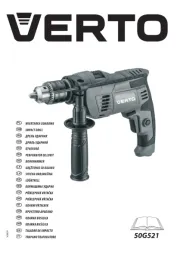
30 Juli 2025
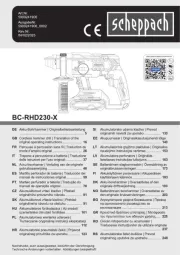
29 Juli 2025
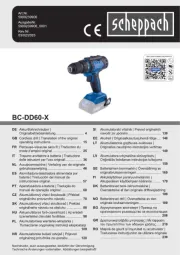
29 Juli 2025
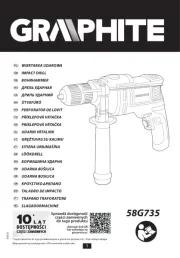
29 Juli 2025
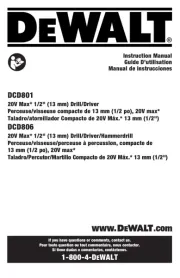
29 Juli 2025
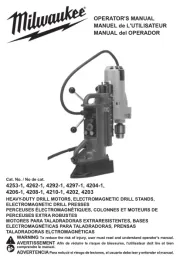
22 Juli 2025
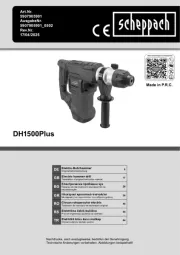
21 Juli 2025
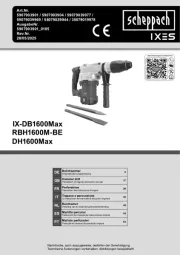
21 Juli 2025
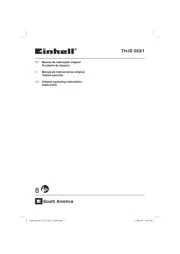
21 Juli 2025
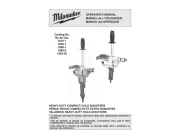
16 Juli 2025